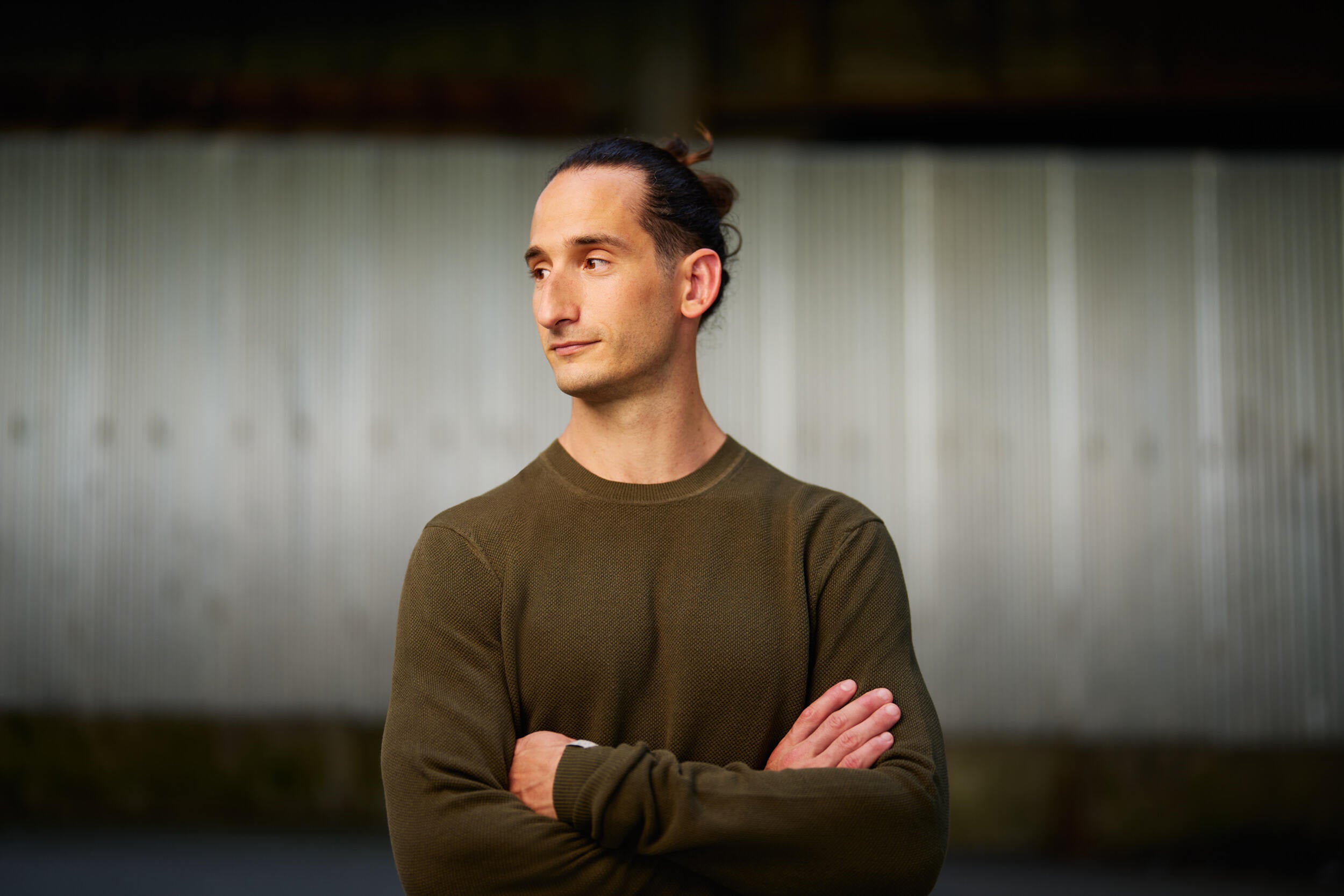TRAINED FOR THE GAMES: How This Elite CrossFitter Evolves as an Athlete

TRAINED FOR THE GAMES is a four-part interview series that explores the training, nutrition, and recovery of four elite-level athletes that participated in Spartan Games 2.0, presented by U.S. Air Force Special Warfare. Episode 1 will premiere on March 24 at 8 p.m. ET. You can watch on Outside TV, SpartanTV, and Spartan's YouTube channel.
In the middle of a successful Division 1 field hockey career, Meg Reardon — like millions of others — took a sip of the CrossFit Kool-Aid and never looked back. And once field hockey was over, it was all in on CrossFit.
“I was like, ‘All right, I think I want to try to compete and take this as far as I can go,’" she says.
And far she went: That casual invite from a coach to a weekend “throwdown” evolved into a journey that led to several consecutive CrossFit Games appearances, plus, more recently, a Spartan Games 2.0 appearance.
Related: How to Build an At-Home Gym Like These 4 Elite Spartan Games Athletes
Here, Meg shares her ever-evolving philosophy around training and nutrition and how she toughed out two of her scariest moments in the Spartan Games, plus a look at what it's like to train with Meg for a week.
A Q&A With Spartan Games 2.0 Athlete Meg Reardon

SPARTAN: Do you remember your first experience with CrossFit?
MEG REARDON: My coach was just like, "Come out and try this class." It was a free partner workout on a Saturday, so they had a lot of what they call "partner throwdowns." It was probably a basic CrossFit workout too, like kettlebell swings, air squats, and stuff. It wasn’t anything crazy, but I loved the atmosphere and the community. So I was all in.
SPARTAN: How have things evolved since then?
MR: It’s been an evolution. When I first started CrossFit, it was as much volume as possible because I wanted to improve my engine. I wanted to get better at skills. I wanted to just be the best athlete that I could be. I was a young person straight out of college, high energy, and just wanting to just get really, really fit. As I've gotten older, I've been dealing with some nagging injuries, so my style of training has changed significantly. I would say now it's really geared toward more functional bodybuilding/prehab work.
SPARTAN: What does that mean for your workouts?
MR: I'm still doing my metcons (metabolic conditioning) and all of that stuff, too, but I've been able to really perfect those skills to the point where I don't necessarily have to do them in high quantities anymore, which is really nice. To supplement that, I’m doing a lot of more functional bodybuilding-style movements that continue to build strength. I take my prehab very seriously, so I do a lot of warm-up stuff and you'll see me do a lot of slant board-style squatting and different variations of things that you would see in CrossFit, it just might look a little different now.
SPARTAN: What was the Spartan Games experience like for you?
MR: I had an idea of what it was going to look like going into it. I knew it wasn't going to be easy by any means. It was 10 events over four days — CrossFit Games is very similar as far as the amount of volume that they put into a weekend — but I knew there was going to be a lot more running than what I was used to. That was my biggest concern because that volume of running is something I haven't really ever tackled before.
Related: TRAINED FOR THE GAMES: This 'Scrawny Runner' Is Now an Elite Athlete
I had to strategize a lot around how I’d get through it, and there were some really scary moments that really put me completely out of my comfort zone, which I loved. There were also some moments that I was able to really take advantage of because they were very, very similar to CrossFit-style events. It was an experience, but it was a lot of fun.
SPARTAN: What were those scary moments?
MR: There were two. When they announced the half-marathon mountain run, my jaw dropped to the floor. I was like, oh man, like I've never ran this far in my life. Nor have I run an elevation like this, so this is going to be wild. But, I think the scarier moment was the lake swim because the elements were so ridiculous. We honestly all thought they were going to just cancel it or push it back, but they were like, "Nope.” And I think the water was 40 degrees and the outside temperature was 38. The water was a little bit warmer, but it was just so cold, so foggy, so windy. It was wild. So it was scary.
SPARTAN: What did you think of the Titan Husacross?
MR: I like it. We do a lot of sandbag work with CrossFit, and it's a little bit different because of how the weight is distributed. I liked that you could actually get underneath it and hold it pretty well. It was a cool element to add in.

SPARTAN: How would you train with it?
MR: There are a lot of different things you could do with it. You could do squats and carries, and a lot of variations of those. That will get your core and back really strong.
SPARTAN: What does your nutrition look like?
MR: Again, this has been an evolution for me, and I think every single person is different. What I eat and how I eat could be drastically different than what someone else eats. We might look similar just because of the style of training that we're doing, but we all need to eat differently. I always make sure to get enough protein throughout the day. I also always try to stay on the outer aisles of the grocery store and don't go towards the processed foods in the center. You'll get more quality ingredients if you stay on the outside. Fruits, vegetables, lean meats, all that kind of stuff. And carbohydrates are essential to training as well, so that includes oats, whole grains, and rice.
Related: TRAINED FOR THE GAMES: This Airman Took on the Titans of Fitness
I eat pretty basic, so it’s easy for me to hold myself accountable. I also track my macros. For me, I'll have pretty similar meals throughout each day of the week, and that works well for me. If I were to narrow it down, getting enough protein in and staying away from those processed foods are the big ones.
SPARTAN: What does your recovery protocol look like?
MR: I like using the WHOOP to track my recovery, but specifically the heart rate variability (HRV) because it allows me to see when I’m over-exerting my body. When I overtrain, my HRV is usually very low, indicating that I probably need to rest or do some type of active recovery that day.
As far as daily recovery, I typically spend a good amount of time stretching in the evening hours just because my hips and knees tend to get really, really tight. So I'll do some quick prehab-style stuff just to get loose. I also visit a chiropractor and get acupuncture done weekly. The other stuff that I do on my own includes stim and using the Normatec boots. Other than that, it’s really about being aggressive with the soft tissue work, and stretching has been really key for me.
SPARTAN: In hindsight, what would you have done to prepare for the Spartan Games?

MR: I would definitely just gear my training toward more long endurance, specifically running. I think that the hardest part for every athlete — because I don't think anyone really knew how close they were going to be invited to the actual event — was that we were all invited just two or three weeks out, I think. So there wasn't much time to train. Some of the other athletes are literally Spartan athletes, so they are doing that type of training regardless, year-round. But specifically for athletes like Christian [Harris] and I, our style of training is significantly different, so the longer endurance pieces would've been very helpful leading up to the event.
Related: TRAINED FOR THE GAMES: This Elite CrossFitter Designs EPIC Programs
SPARTAN: What's one of your go-to Spartan workouts?
For time:
— 100-calorie row
— 80 deadlifts (155/105)
— 60 alternating dumbbell snatches (50/35)
— 40 pull-ups
— 200-foot sandbag carry (150/100, or a challenging load)
This is a benchmark, but probably a bit more advanced than a beginner workout.
Train Like Meg Reardon for a Week

Depending on the time of year, Meg’s weekly schedule can vary quite a bit, but the overall goal is to continue to build strength, endurance, skills, and stay injury-free. At the moment, she’s doing one session per day. Due to a relatively fresh knee injury that she’s since recovered from, she does sled work five times per week, either as a part of her warm-up or as a metcon. This has been important for her in keeping her knee strong and pain-free.
Monday:
AM: 20-30 minutes of cardio to warm up followed by a leg-intensive day, which includes knees over toes training, squat variations, and a short-fast interval workout. Plus, a weekly chiropractor appointment.
PM: 10-15 minutes of stretching and foam rolling the posterior chain (hips, glutes, quads, hamstrings, calves, feet, etc.)
Tuesday:
AM: 20-30 minutes of cardio to warm up followed by an arm-intensive day, including variations of pulling and pushing, accessory work, and an arm-focused metcon or a longer chipper-style workout.
PM: 10-15 minutes of stretching and foam rolling that focuses on the upper body.
Wednesday:
AM: Long EMOM day that involves 40-60 minutes of conditioning built in with skill or grunt work.
PM: 20 minutes of full-body stretching, breath work, and recovery.
Thursday:
AM/PM: Active recovery day that usually involves a long swim session (45 minutes to 1 hour) followed up by sitting in a steam room for 15 minutes.
Friday:
AM: 20-30 minutes of cardio to warm up. A full body-focused day with squatting variations, knees over toes work, accessory work, and an interval-style high-intensity metcon where she’s working for a set amount of time and resting for a set amount of time.
PM: 20 minutes of full-body stretching, breath work, and stim machine on legs.
Saturday:
AM/PM: Usually a partner-style metcon. This is a long workout that's split between two people, which makes for a nice change-up for working out solo every day.
Sunday:
Meg is typically fully off and out of the gym on Sundays. Mornings are spent mobilizing and loosening up before starting the day.
U.S. Air Force Special Warfare takes mental and physical toughness to the next level, which is why they were the perfect partner for this year’s Spartan Games. To learn more about the heroes who make up the top 1% of the 1%, click here.


